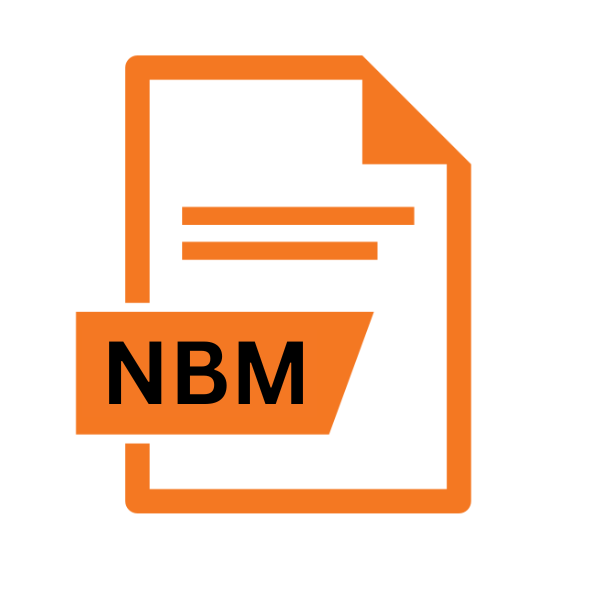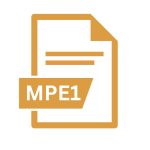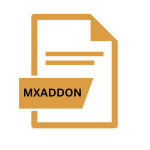.NBM File Extension

NetBeans Module
| Developer | Apache |
| Popularity | |
| Category | Plugin Files |
| Format | .NBM |
| Cross Platform | Update Soon |
What is an NBM file?
The .NBM file extension is associated with NetBeans, an integrated development environment (IDE) primarily used for Java development but also supporting other languages such as PHP and C/C++.
A .NBM file is a NetBeans module, which is a package containing Java classes, resources, and metadata that extend the functionality of the NetBeans IDE.
More Information.
The .NBM file format was introduced alongside NetBeans IDE, originating from a student project at Charles University in Prague in 1996.
Initially designed for Java development, NetBeans quickly gained popularity due to its versatility and extensibility.
The .NBM format was created to facilitate the distribution and installation of custom extensions, enabling developers to enhance the IDE’s functionality according to their specific requirements.
Origin Of This File.
The .NBM file format was introduced alongside NetBeans IDE, which originated as a student project at Charles University in Prague in 1996.
Initially designed for Java development, NetBeans quickly gained popularity due to its versatility and extensibility.
The .NBM file format was created to facilitate the distribution and installation of custom extensions, allowing developers to enhance the functionality of the IDE according to their specific needs.
File Structure Technical Specification.
A .NBM file is essentially a compressed archive, typically using the ZIP format, containing the following components:
- Module Manifest: Metadata describing the module, including its name, version, dependencies, and other relevant information.
- Compiled Java Classes: The core functionality of the module is implemented as Java bytecode.
- Resources: Additional files such as images, XML configuration files, and documentation required by the module.
- Libraries: External libraries or dependencies required by the module.
- Installation Instructions: Instructions for installing or deploying the module within the NetBeans IDE.
How to Convert the File?
Converting a .NBM file involves extracting its contents, a process straightforwardly achievable with readily available archive utilities. Initially, locate the .NBM file within your file system.
In Windows, access it through File Explorer; on Linux, use your preferred file manager; for macOS, utilize Finder; and on mobile devices, open your file manager app. Next, choose an appropriate archive utility compatible with your operating system.
In Windows, options like WinZip or 7-Zip suffice, while Linux users may opt for Archive Manager or the unzip command in the terminal. macOS users can rely on the built-in Archive Utility or install third-party alternatives. Once selected, proceed to extract the .NBM file’s contents using the chosen utility.
Simply follow the prompts to extract the files to a specified location. Upon completion, access the extracted contents in the designated folder to review or further manipulate them. This method ensures seamless conversion of .NBM files, enabling users to utilize their contents as needed.
Advantages And Disadvantages.
Advantage:
- Modularity: .NBM files allow for modular extension of the NetBeans IDE, enabling developers to add new features or customize existing ones without modifying the core functionality.
- Easy Distribution: .NBM files simplify the distribution and installation of custom modules, making it straightforward for developers to share their enhancements with others.
- Enhanced Productivity: By leveraging existing modules or creating custom ones, developers can streamline their workflow and increase productivity within the NetBeans IDE.
Disadvantage:
- Compatibility Issues: .NBM files may encounter compatibility issues between different versions of NetBeans IDE, especially if they rely on specific APIs or features that have changed.
- Complexity: Developing and maintaining .NBM files can be complex, particularly for large or intricate modules requiring careful management of dependencies and compatibility.
- Limited Documentation: While NetBeans provides documentation and guidelines for creating .NBM files, comprehensive resources may be limited, making it challenging for developers to troubleshoot issues or optimize their modules.
How to Open NBM?
Open In Windows
To open a .NBM file in Windows, simply double-click on the file to open it with the default archive utility or right-click and choose an archive tool like WinZip or 7-Zip. Then, follow the prompts to extract the contents to a desired location for access.
Open In Linux
In Linux, extract a .NBM file by using the unzip command in the terminal. Navigate to the directory containing the .NBM file and run “unzip filename.nbm”.
This command will extract the contents of the .NBM file into the current directory for further access and manipulation.
Open In MAC
To open a .NBM file in macOS, double-click on the file to extract its contents using the built-in Archive Utility.
Install third-party archive utilities like The Unarchiver and associate .NBM files with it for extraction. Access the extracted files in the destination folder as required.
Open In Android
While .NBM files are primarily intended for desktop use, some file manager apps on Android may support ZIP extraction.
Open your file manager app, and locate the .NBM file, and select the option to extract it. Once extracted, access the contents within the file manager or relevant apps.
Open In IOS
Similar to Android, .NBM files can be extracted on iOS devices using compatible file manager apps.
Locate the .NBM file within your file manager app, select it and choose the option to extract or unzip. Once extracted, access the contents using the file manager or relevant apps.
Open in Others
On other platforms, utilize archive utilities or file manager apps capable of handling ZIP files to extract .NBM file contents.
Open the .NBM file with the chosen utility or app, then follow the extraction process. Once extracted, access the contents as needed within the respective platform’s file system.













